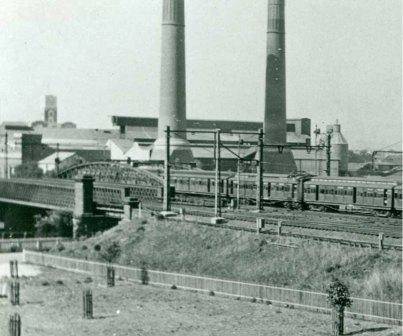| Back to search results » | Back to search page » |
|
Former Richmond Power Station
LocationOddy's Lane,, CREMORNE VIC 3121 - Property No B6586
File NumberB6586LevelState |
|
Statement of Significance
The Richmond Power Station is of State significance as the oldest existing electric power station building in Victoria and the first large, purpose designed and built, central electric power station in Victoria. While it has largely been stripped of its equipment, the building still demonstrates the evolutionary nature of the power industry.
The Richmond Power Station is also the most intact of the early electricity generating plants in Victoria, comparing favourably with the only fragmentary remains or totally demolished sites of the contemporary power stations at Spencer Street, Melbourne, Alcock's Burnley power station and regional plants in Geelong, Bendigo and Ballarat.
The Richmond Power Station is architecturally significant as a rare example of a large late Victorian public utility, designed in Italian Romanesque Industrial style by architect Henry B Gibbs. Its decorative features such as the finely articulated western facade with its "campanile" tower, vast glazed arched openings in the east end of the boiler house and turbine hall, and complex industrial roof lines, demonstrate both the practical importance of the provision of electricity to domestic and commercial users in central Melbourne, and the aesthetic expression of what was perceived as a grand scientific and technological undertaking.
The power station is of scientific significance as the site of the first introduction of several technological innovations in steam power and electricity generation. These included one of the first installations of a new type of patent water-tube boiler made by Babcock & Wilcox, the first all Alternating Current, generating plant in Victoria.
The Richmond Power Station was the first electric power station in Victoria to adopt full A.C. generation and the 50 cycles-per-second A.C. current, which is now the Australian standard for all public power supply. This technology allowed larger central generating units which could supply a great number of customers, at considerable distance from the supply station. The station was for a time, in the early 1890s, the largest electric power station in Austrialia with a generating capacity of about 750 Kkw.
The power station is also of social significance for its impact on urban conditions in inner suburbs by providing cheap and readily available lighting which improved safety in the streets and working conditions in factories. The site is also associated with H. R.Harper, the first manager of the Power Station who went on to work as Chief Electrical Engineer at the M.C.C. Electricity Supply Department, and subsequently became first Chief Engineer of the newly formed State Electricity Commission in 1919.
Classified: 17/08/1994
Group
Utilities - Electricity
Category
Generator/Power Station - coal/gas/oil




